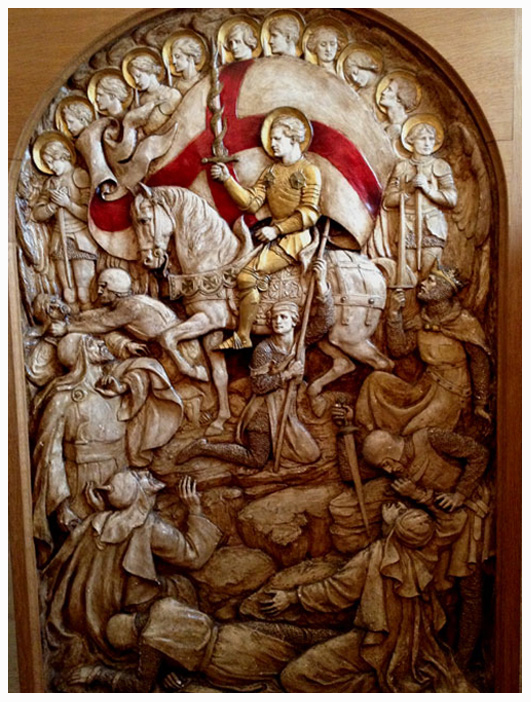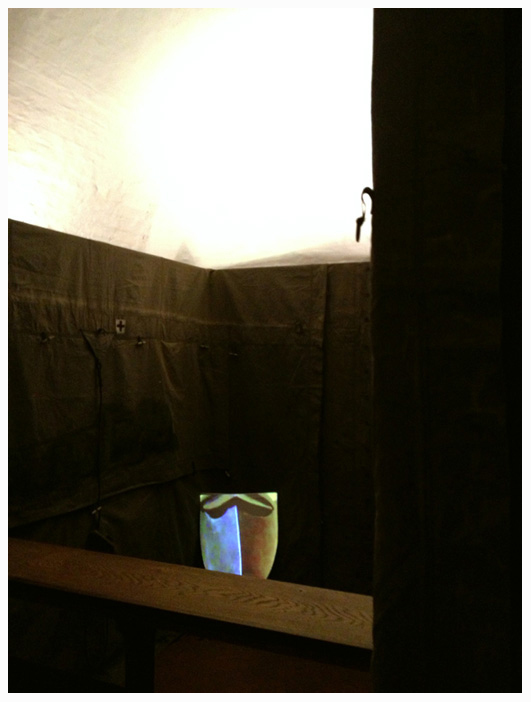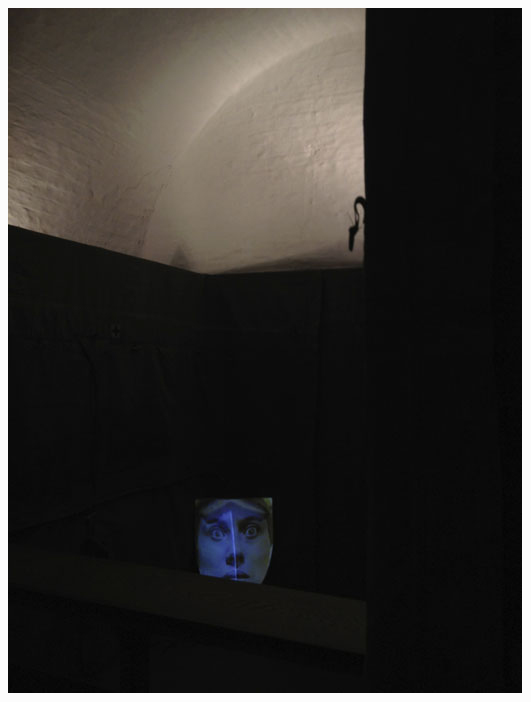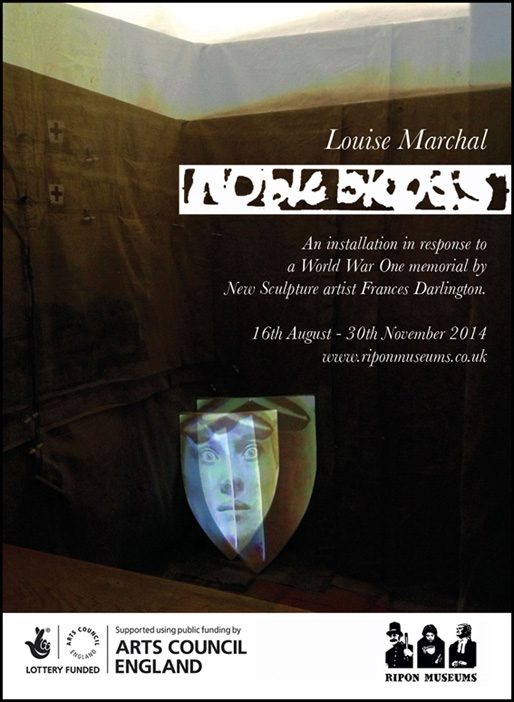






Noble Bloods was an installation made in response to a First World War memorial by Frances Darlington (1880-1940). The title was a play upon some of the problematic themes and shifting values in the original work. ‘Noble’ developed from the notion of 'noble' lineage to that of noble deed, sacrifice and generosity. Consider Chaucer’s theme of “gentilesse” which suggests that it is how that one acts that denotes nobility, not wealth or blood. ‘Bloods’ similarly shifted from that same concept of lineage to the contemporary use of the word to denote brethren - the memorial was to orphans from a police orphanage, they were brothers by chance. Although not blood relatives they were joined in their lot, their home and shared experience - and tragically in their immersion into the bloody battles of The First World War.
Darlington’s 1919 relief panel featured a triumph of Christian crusaders which seemed at odds with contemporary multicultural society. As the Red Cross of St George dominated the work, I countered this by painting the army canvas walls of the installation with the insignia of both the Red Crescent and the Red Cross - humanitarian groups which rescue the wounded and dying, since I envisaged the whole work in the form of a field hospital situated in what was once the prison chapel - a location of peace and healing on this centenary of the outbreak of the war.